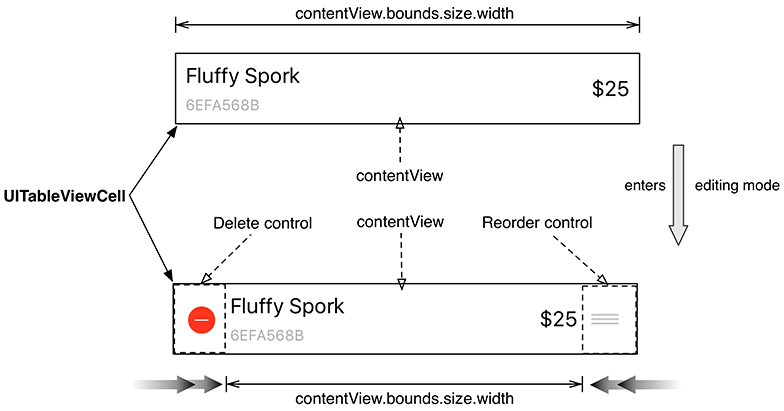A UITableView displays a list of UITableViewCell objects. For many applications, the basic cell with its textLabel, detailTextLabel, and imageView is sufficient. However, when you need a cell with more detail or a different layout, you subclass UITableViewCell.
In this chapter, you will create a subclass of UITableViewCell named ItemCell that will display Item instances more effectively. Each of these cells will show an Item’s name, its value in dollars, and its serial number (Figure 10.1).
You customize the appearance of UITableViewCell subclasses by adding subviews to its contentView. Adding subviews to the contentView instead of directly to the cell itself is important because the cell will resize its contentView at certain times. For example, when a table view enters editing mode, the contentView resizes itself to make room for the editing controls (Figure 10.2).
If you added subviews directly to the UITableViewCell, the editing controls would obscure the subviews. The cell cannot adjust its size when entering edit mode (it must remain the width of the table view), but the contentView can and does.

